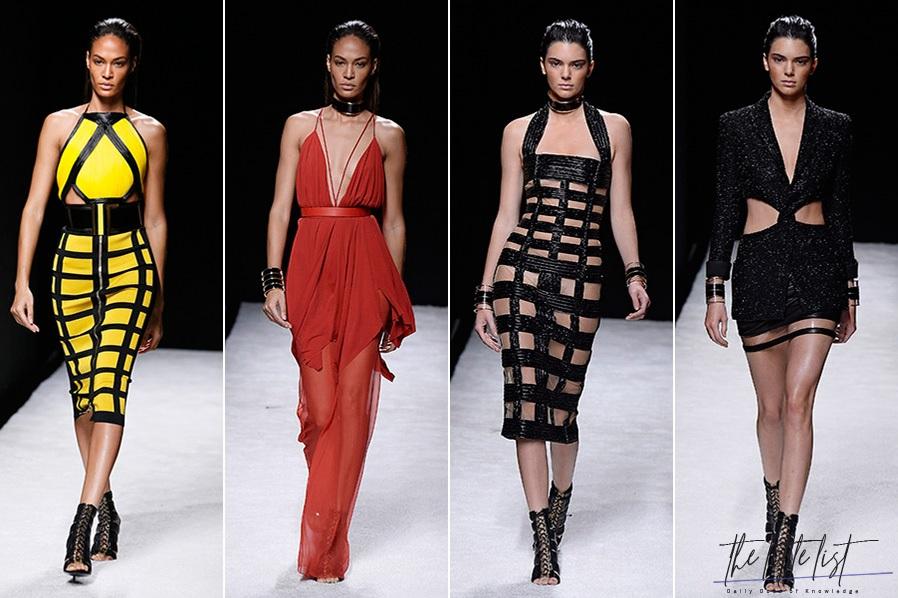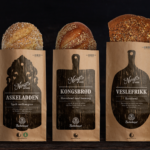Learn some clothing names and fashion expressions
Hello Lindona! Do you ever get confused or have some doubts about the expressions used to define some types of clothing? Have you ever heard someone talking about fashion and some words sounded strange to you?!
All well! Even people who work with this every day have doubts and still use to write and pronounce it wrongly!
So, to help you understand a little more, I have created a mini fashion dictionary here for you, who are curious, to learn a little more about this.
Mini fashion dictionary
Timeless: is the term used for something that transcends time (present, past and future), it is what belongs to any time, that is, in fashion it is used when we want to say that a piece or style is eternal.
Androgynous: it refers to two concepts: the blending of feminine and masculine characteristics into a single being or a way of describing something that is neither masculine nor feminine. A person who feels that he has a combination of cultural characteristics, both male (andro) and female (gino). In fashion, when talking about androgyny, it means effeminate pieces in the male segment and masculine in the female segment. As an example we have the Oxford shoe for women.
Anorak: large, padded coat for the cold.
Ankle Boots: short boots.
Mulberry: artificial fabric that imitates silk. It is used in women’s clothing, usually for summer.
Sheath: sewing made on the hem of a garment or fabric, determining the length.
Bandana: square-shaped fabric, usually cotton, often used as a head scarf.
Basic: it’s the casual and simple style that never errs on the side.
Knock: is a type of loose blouse, worn by both men and women.
Boyfriend Jacket: the coats are wide and loose, like a boyfriend’s jacket.
Balloon: garment, usually skirts and dresses, with a ruffled cut and held at the bottom, which suggest the shape of a balloon.
Bar: single ply finish, done both in and out at the lower ends of garments.
Italian Bar: wide, fixed and apparent fold finish that gives a more refined look to both men’s and women’s pants.
Baggy: pants wide at the hips, tapered at the ankles.
Balconné: Bold neckline, with straps and fins.
Baroque: in fashion, Baroque is often taken up again through pieces reminiscent of the ecclesiastical atmosphere and the medieval style (pastel colors, rustic fabrics, shawls, hoods, capes, coats, heavy robes, especially in winter).
Basfond: strong frill.
Baschine: Decorated skirt, used in the 16th century, very wide, remained open and stretched over circles. She was confused with a bustle.
Body: swimsuit for use as lingerie.
Bolero: short, open coat that covers only the shoulders and breasts and should be worn over tank tops. The bolero can be with or without sleeves.
Bell Bottom: it’s a style of jeans, like those of the 60s, hippie style, elephant paw.
Biker: biker style. Lots of leather jacket and buckled boots.
Boots: mid-length and tall boots.
Bottom: lower part. Skirt, pants, shorts, shorts etc.
Denim: thick fabric, used in various articles, including professional clothing, pants, jackets, etc.
Coulisse: word of French origin that designates the tubular finish through which the cords, ribbons or strips of fabric pass that adjust and give a ruffled appearance to bars, cuffs, waists or hoods of various pieces of clothing.
Camouflage: army style, pop or super colored.
Office: clothing style inspired by military uniforms, consisting of pockets and ample modeling, now also known as utilitarian pieces.
Casual: laid-back, simple and tidy style of dress.
You will: are the boots that go beyond the knees. we also talk over knees.
Cache-Coeur: type of blouse with pierced neckline and draped over the chest.
African Shirt: shirt wide and open on the side.
Cannadienne: Fleece jacket, very sporty, 3/4 length, double-breasted buttoning with four or six buttons. In the back may not have frowned.
Kangaroo: it is a blouse, shirt or jacket model that has front pockets arranged in the middle of the piece and a hood.
Cardigan: collarless wool coat with central buttoning that can be worn over other garments.
Chemisier: dress buttoned in front, like a men’s shirt.
Wildcard: it is the key piece in the closet, like the famous little black dress that fits all occasions.
Corselet: it’s a bodice with tighter seams than a corset (lingerie), but it doesn’t mold the body. Not to be confused with CORSET, which is used to shape the body.
Skewed cut: type of cut that gives more drape to the fabric or piece. It is made on the bias (diagonal) of the fabric.
Evase Cut: refers to the cut of clothes that open evenly and harmoniously towards the bottom.
College: style inspired by the clothes of old schoolgirls pleated skirts, white blouse, flat shoes, ribbon bows. For boys, tie and dry suits with the school emblem.
Current Fashion: current fashion.
Harem pants: wide, turkish style.
Cotelê: fabric with ridges (ribs) on its surface, which are cut, forming the hair. Velvet type.
Draped: folding or pleating effect that produces harmonious ripples in garments or decorative items.
Degagé: free neckline or open collar, away from the neck or cleavage.
Délavé: washed effect to look used, can be on jeans, leather and lighter fabrics like silk.
Devore: Devoré or burnout (tissue etch) refers to a chemical process where a component of the tissue is destroyed. The devoré fabric has transparent areas and reliefs.
Dicron: is a stretch fabric, made with microfiber and elastane that guarantee the softness and elasticity of the garment. The differential of this product is the discreet shine obtained through the use of an iridescent wire that emits small points of light with the movement and incidence of light on the piece.
Dry fit: concept used to define the fabric made with polyamide and elastane, that is, the supplex which, due to its structure and yarn titration, provides a favorable comfort for sports garments that require a high level of transpiration. The piece with the Dry Fit concept has the fabric with the ability to remove moisture from the body and transport it out of the fabric. Dry Fit means “dry fit” in English.
blunt: it is a process designed to fade a fabric and leave it looking used and old.
Scarf: long, narrow scarf that wraps around the neck.
Scottish: kind of chess, used by the clans of Scotland. It is the characteristic print of the kilt.
Celeb Style: how celebrities dress up: top models, pop singers and Hollywood actresses. For example: Kate Moss, Diane Kruger, Madonna, Lily Allen
Sash: of French origin, festonné, is a type of embroidered finish on clothes or fabric pieces.
Folk: style developed through inspiration from folkloric items from a particular country or region.
Fitness: fashion for gym, sport and leisure.
Fuseau: is a very tight pants that have straps at the bottom to fit the feet.
Fuxico: It is a small piece made manually with fabric, with a rounded shape, in which, after sewing, the thread is gathered to form a kind of flower.
Fruit: perhaps the quintessential feminine ornament. Onomatopoeic form of ruffled frills, usually narrow.
Godê: cut in skewed fabric that provides width and wavy fit, often used in skirts and dresses.
Glam: 70s style, luxurious and sexy elegance.
glitter: Shiny effect due to glitter, there are different colors.
Grosgrain: full-bodied, plain, jacquard or printed fabric, usually mixed with cotton and polyester, with a ribbed effect, often used for pants, decoration, upholstery, etc.
Skill: literally dressed. Popularly, the dress is decorated, luxurious, which does not prevent it from being short.
Hype: excessive advertising, something that causes a lot of anticipation before its release, euphoria of publicity. In fashion, it’s something like trendy, the latest fashion.
Hit: used to refer to something that will be the hit of the season, which should be highly sought after in stores.
Homewear: practical and comfortable clothing to be used at home.
Hi-lo: is an abbreviation for the expression high and low, that is, high and low. This is a fashion concept whose main characteristic is the mixture of sophisticated pieces and other more basic ones, designer pieces with other popular ones, etc.
Eyelets: round trim with central hole used for the passage of air, water or strings in clothes, accessories, furniture, etc.
Perfect jacket: the famous black zippered leather jacket.
Bib: sports overalls that must be worn with a shirt or T-Shirt.
Jodhpurs: Indian-style pants are wide at the knees and then narrow at the legs. They were used for riding.
Leggings: footless elasticized pants. Used for gymnastics, for going out at night in a long blouse or miniskirt or minidress.
Look: it is the composition of parts, accessories and style.
Maxi Pullover: it is a large coat, usually made of wool, which may or may not have a long sleeve.
Matelasse: word of French origin, refers to the quilted appearance obtained from the apparent sewing of a layer of filling between two pieces of fabric or leather.
Mantille: coming from Spain, reduced from the old shawl worn by both widows and young girls, who were supposed to cover their faces.
Minidress: short dress.
Nude: comes from the word nua, so the MN (nude fashion) means the fashion that reserves colors of beige, baby pink (very light pink), skin color, etc.
Negligee: a type of dressing gown made of light and transparent fabric, which is worn intimately over a nightgown.
Rib: Narrow, embossed fold or fold that results in a stripe or design on the fabric.
Obi: originally, the belt that ties Japanese kimonos. Today, it indicates a wide strip of fabric, leather, or
another material, which loops twice at the waist and tied in a knot at the front.
Open toe: shoe or boot with an open toe.
Pantalona: long pants with wide legs, which may or may not have pleats at the waist.
Paper: sandal basically held by three horizontal straps. The first is close to the toes, the second halfway through the instep, and the third behind the heel. It can have different types of heels and be made with canvas, nylon or leather.
Peep-toes: they are shoes with a round toe which is open only at the tips of the toes, giving a retro air, typical of the 40s and 50s.
Peplum: is a pleat or ruffle located at the hip or end of the waist, being applied over other skirts. The peplum is inspired by Dior’s New Look, which appeared in the 50s.
Gaiters: piece worn on the ankles. It’s like a sock without a foot.
Cape: It’s a short, godet-shaped piece that only covers the shoulders and upper arms.
Pence: Usually used to adjust or better define the silhouette of an outfit, it is a small pleat, made on the wrong side, which gradually narrows until it disappears completely.
Backstitch: exposed sewing, made by machine, with the objective of joining the cutouts of a piece or simply embellishing.
Fold: overlapping fold made in a fabric.
Ready-to-wear: from French, it means ready to use. It’s the clothes we find in malls, that is, it wasn’t made-to-measure for us.
Chalk line: fabric pattern with very fine and light stripes on dark fabric.
Retro: is a term used for old clothes coming back into fashion. Retro are the pieces that were produced recently, new models inspired by the old ones.
 Fashion & Looks & Luxe et 90s Outfits.
Fashion & Looks & Luxe et 90s Outfits.
Thanks for visiting we hope our article Learn some clothing names and fashion expressions
, don’t forget to share the article on Facebook, pinterest and e-mail with the hashtag ☑️ #Learn #clothing #names #fashion #expressions ☑️!


